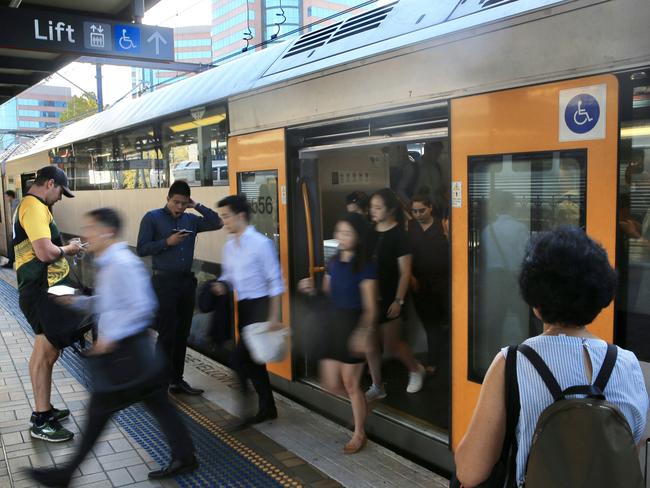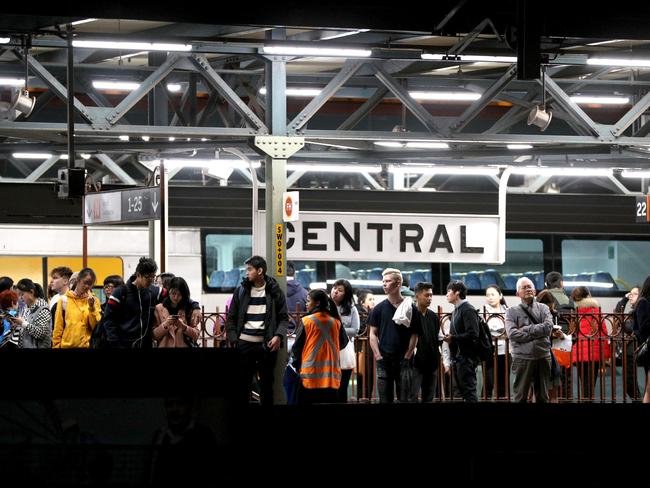New Sydney train fleet to rely on passengers in medical emergencies after guards dumped
DRIVERS on the new intercity fleet will be forced to rely on commuters with medical training in order to receive first aid in the event of a an emergency because guards are being cut from the service.
NSW
Don't miss out on the headlines from NSW. Followed categories will be added to My News.
DRIVERS and passengers on the new intercity train fleet will be forced to rely on other commuters with medical training if there is an emergency because guards are being cut from the service.
In their place, a central control system at Green Square will monitor the drivers via in-cabin CCTV.
In cases of emergency an announcement will be made over the train PA system asking if there is “a doctor in the house”, the rail union claims.
The move also means women and children will no longer be unable to ride in special blue-light carriages beside the guard.
As the Rail, Tram and Bus Union prepares to take the state government to the Fair Work Commission tomorrow over lack of consultation, new details have emerged about operation of the new fleet.

Costing $2.3 billion, the South Korean trains are expected to hit the tracks around March next year. Eight and 10 car sets will be rolled out first on the Newcastle-Sydney line first, followed by the Blue Mountains and Illawarra lines.
It is understood the Newcastle to Sydney run will have a “customer service officer” on board until Hornsby, with the train becoming driver-only for the rest of the trip into Sydney.
The rail union is taking the government to the commission for lack of consultation over the proposed changes, some of which are in breach of recommendations following the fatal Waterfall train crash in 2003.
The government first flagged its “preferred option” for the new trains not to have guards in September, 2016.
RTBU State secretary Alex Claassens said guards played a critical role in both passenger and driver safety, which could not be matched by CCTV.

This includes alerting the driver to stop the train to avoid passengers from falling between the train and the platform, especially parents with prams, the elderly and disabled.
In the case of an unwell driver, Mr Claassens said the plan to ask if there was a doctor or nurse on board via the PA system was unacceptable.
In the event there was a medically trained passenger on board, allowing an unauthorised person access to the driver cabin was a security risk.
Mr Claassens said relying on the driver to monitor CCTV before reporting back any incidents to the control centre was unworkable.
Findings from the Waterfall inquiry require drivers and guards to work as a team, he said.
“The driver’s primary concern should be driving the train, not monitoring CCTV,” Mr Claassens said.
“The guards are trained in first aid, firefighting and are responsible for alerting the driver to stop the train in the event there is a risk of a passenger falling between the platform and train.
“Should the train hit someone, the guard will respond to the person who has been struck, while the driver looks after the train. The guard then takes care of the driver and the commuters.”
TrainLink Chief Operating Officer Pete Allaway said consultations were underway with commuters, unions and staff on three options for the new trains — driver-only, driver and guard, or driver with a customer service person on board outside the suburban ring.
“The safety of our customers and staff is our number one priority,” he said.
“We will be working closely with safety regulators, unions and staff to ensure any changes to crewing meet our high standards.”
